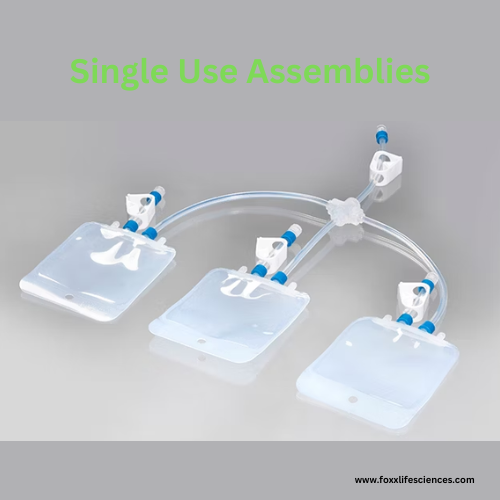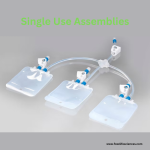
Single Use Assemblies are revolutionizing the biopharmaceutical, medical, and laboratory industries. These ready-to-use, pre-assembled, and sterilized systems offer flexibility, efficiency, and reduced contamination risks, making them essential in modern manufacturing and research.
What are Single Use Assemblies?
Single Use Assemblies consist of disposable components such as tubing, filters, bags, and connectors designed for one-time use. They eliminate the need for cleaning and sterilization, improving operational efficiency.
Key Benefits of Single Use Assemblies
-
Cost Savings: Eliminates cleaning, sterilization, and validation costs.
-
Reduced Contamination Risk: Pre-sterilized components minimize microbial contamination.
-
Increased Efficiency: Faster setup and changeovers improve productivity.
-
Sustainability: Innovations in biodegradable materials enhance eco-friendliness.
Applications of Single Use Assemblies
-
Biopharmaceutical Manufacturing: Used in vaccine and monoclonal antibody production.
-
Vaccine Production: Essential for rapid, contamination-free vaccine development.
-
Cell and Gene Therapy: Supports flexible and scalable therapy production.
-
Laboratory Research: Ensures high purity standards in research applications.
-
Food and Beverage Processing: Used for safe and hygienic liquid handling.
Types of Single Use Assemblies
-
Tubing and Manifolds: For fluid transfer in controlled environments.
-
Filters and Connectors: Maintain sterility and prevent contamination.
-
Bags and Bioreactors: Replace traditional stainless-steel tanks.
-
Sampling Systems: Allow aseptic sample collection.
How Single Use Assemblies Improve Process Efficiency
Single Use Assemblies simplify processes, reduce downtime, and minimize cross-contamination risks. Their plug-and-play nature speeds up operations, making them highly advantageous in fast-paced production environments.
Challenges and Considerations
-
Material Compatibility: Ensuring chemical resistance and durability.
-
Waste Management: Addressing disposal and recycling challenges.
-
Regulatory Compliance: Meeting industry standards and certifications.
Regulatory and Compliance Standards
-
FDA & EMA Guidelines: Ensure safety and quality in pharmaceutical use.
-
cGMP Compliance: Good Manufacturing Practices for reliability.
-
ISO Standards: Global quality and safety benchmarks.
Comparing Single Use vs. Traditional Stainless Steel Systems
-
Cost Analysis: Lower initial investment but ongoing replacement costs.
-
Performance: Single use reduces contamination risk but has material limitations.
-
Ease of Use: Quick setup and minimal maintenance compared to stainless steel.
Trends in Single Use Assemblies
-
Material Innovations: Development of more durable, sustainable materials.
-
New Industry Adoption: Expanding beyond biotech into food processing and healthcare.
-
Digital Integration: Smart monitoring and automation enhancements.
How to Select the Right Single Use Assemblies
-
Factors to Consider: Application, material compatibility, and regulatory requirements.
-
Supplier Selection: Look for quality certifications and industry reputation.
-
Customization Options: Tailor designs for specific needs.
Case Studies: Real-World Examples
-
Biotech Success: Companies improving efficiency with single-use technologies.
-
Pharmaceutical Implementation: Reducing costs while maintaining high quality.
Future of Single Use Assemblies
-
Advancements in Design: Improved durability and performance.
-
Manufacturing Impact: Faster, cleaner production lines.
-
Sustainability Innovations: Focus on recyclable and biodegradable options.
Conclusion
Single Use Assemblies provide an innovative solution to modern manufacturing and research challenges. With ongoing advancements, their role will only expand, driving efficiency, safety, and sustainability in various industries.






Leave a Reply